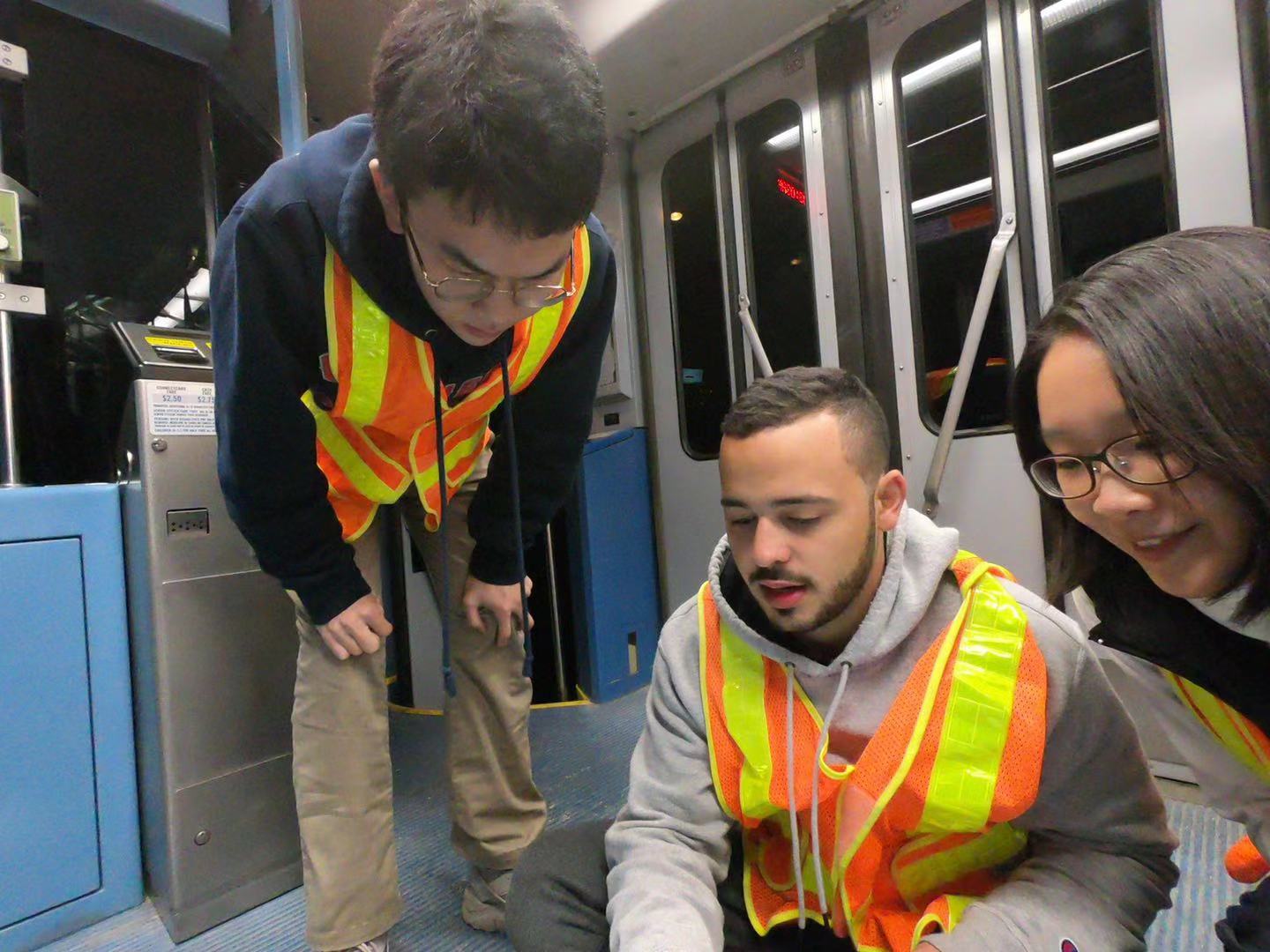
CEE Team’s DR-Train is First-of-its-Kind SHM for Rail
Jingxiao Liu knew that a system was desperately needed to automatically assess the structural health monitoring (SHM) of rail infrastructure. Despite the $9.7 billion in capital that private freight rail industry puts into maintaining its network, there were nearly 1,1100 derailments in 2015. Just two years later, the Federal Highway Administration found that 7.7% of U.S. bridges were in poor condition.“Efficient and reliable structural health monitoring (SHM) approaches are required to improve the nation-wide infrastructure management,” stays Liu, a current PhD student at CEE.
The currently utilized direct approaches can be cost prohibitive and labor intensive. Liu’s team believed that an indirect system could be a low cost, low maintenance approach that used sensors on rail vehicles to detect infrastructure changes and damage.
Their result of their work was recently published as DR-Train, the first long-term open-access dataset recording dynamic responses from in-service light rail vehicles, in Zenodo. Liu explains that the dataset contains measurements from multiple sensor channels mounted on two light rail vehicles in the City of Pittsburgh.
Professors Hae Young Noh and Mario Berges co-founded the project alongside an original team of Liu, Jim Garrett, Jacobo Bielak, Jelena Kovacevic, and former PhD George Lederman (PhD '17). They developed numerical tools, built lab-scale experimental setup, and field experimental setup to study the problem of vehicle vibration-based SHM. The team worked with the support of NSF and the University Transportation Center at CMU.
DR-Train also includes corresponding GPS positions of the trains, environmental conditions (including temperature, wind, weather, and precipitation), and track maintenance logs. The data is stored in a MAT-file format that may be loaded to validate anomaly detection and data fusion and investigate environmental influences on train responses.
In 2013, a Port Authority of Allegheny County train was outfitted with sensors. A second train followed less than two years later. “We have been continuously collecting the trains’ position using GPS and their dynamic responses using accelerometers,” Liu adds. Over time, the group learned how the trains responded to each section of track. They used a combination of data-driven and physics-based approaches to detect changes to the track condition relative to its historical baseline.
Liu states that they also focused on indirectly monitoring bridges for two reasons. Structural damage, especially internal damage on bridges, may be detected by using accelerometers. And after managing to detect sudden changes in the tracks, the team wanted to detect and quantify gradual changes using acceleration signals.
“We provided evidence of the applicability of the indirect damage diagnosis approach through better accuracy from the indirect sensors than the direct bridge sensors in certain cases.” But Liu says that additional study is needed to validate this damage diagnosis framework with a more complex and realistic system.
In the future, the team plans to perform on-site tests to verify the feasibility of this work in practice. “We also need to study the influence of different types of damage scenarios, vehicle velocity, ongoing traffic, and environmental factors, Liu states.